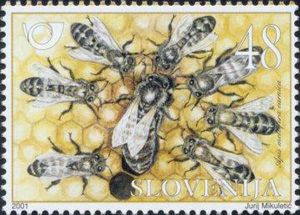During foraging activities honeybees are frequently exposed to different xenobiotics, most of them are agrochemical pesticides and beehive chemicals. The understanding of synergy mechanisms between xenobiotics is very important for the control of defined mixtures use and also for the prediction of potential toxicity of newly developed substances in agriculture and apiculture. This review is focused on the effects, mechanisms and molecular targets of xenobiotics in honeybees and possible complex mechanisms of their synergisms. The majority of synergistic effects observed in honeybees were ascribed to the inhibition of detoxifying midgut enzymes P450 involved in xenobiotic metabolism. The main inhibitors of P450 enzymes are specific compounds used to prolong the effects of pesticides as well as some fungicides. Some insecticides can also interact with these enzymes and influence the xenobiotics.
Source:
Gordana Glavan and Janko Božič (2013) The synergy of xenobiotics in honey bee Apis mellifera: mechanisms
and effects. Acta Biologica Slovenica, 56 (1): 11-25

- Login om te reageren
